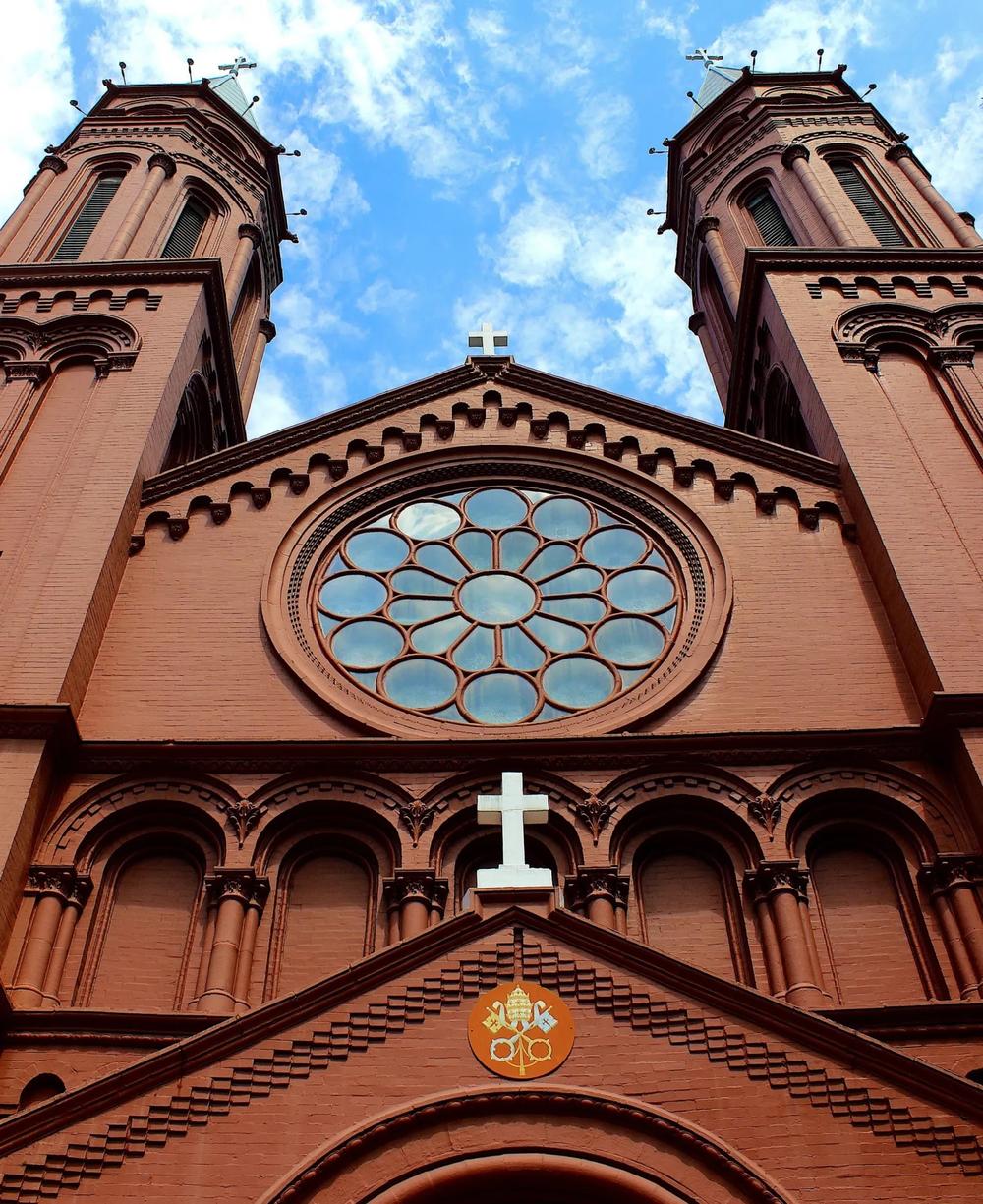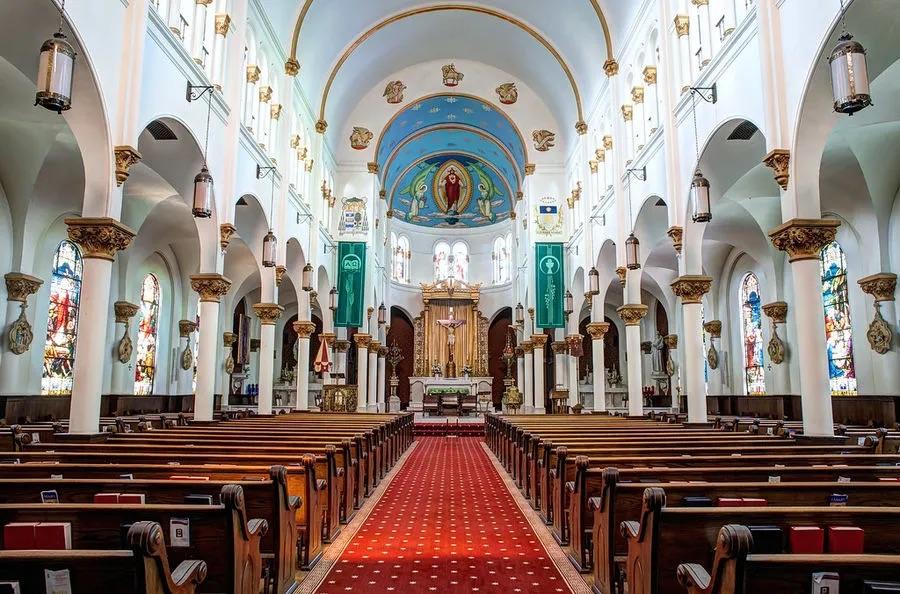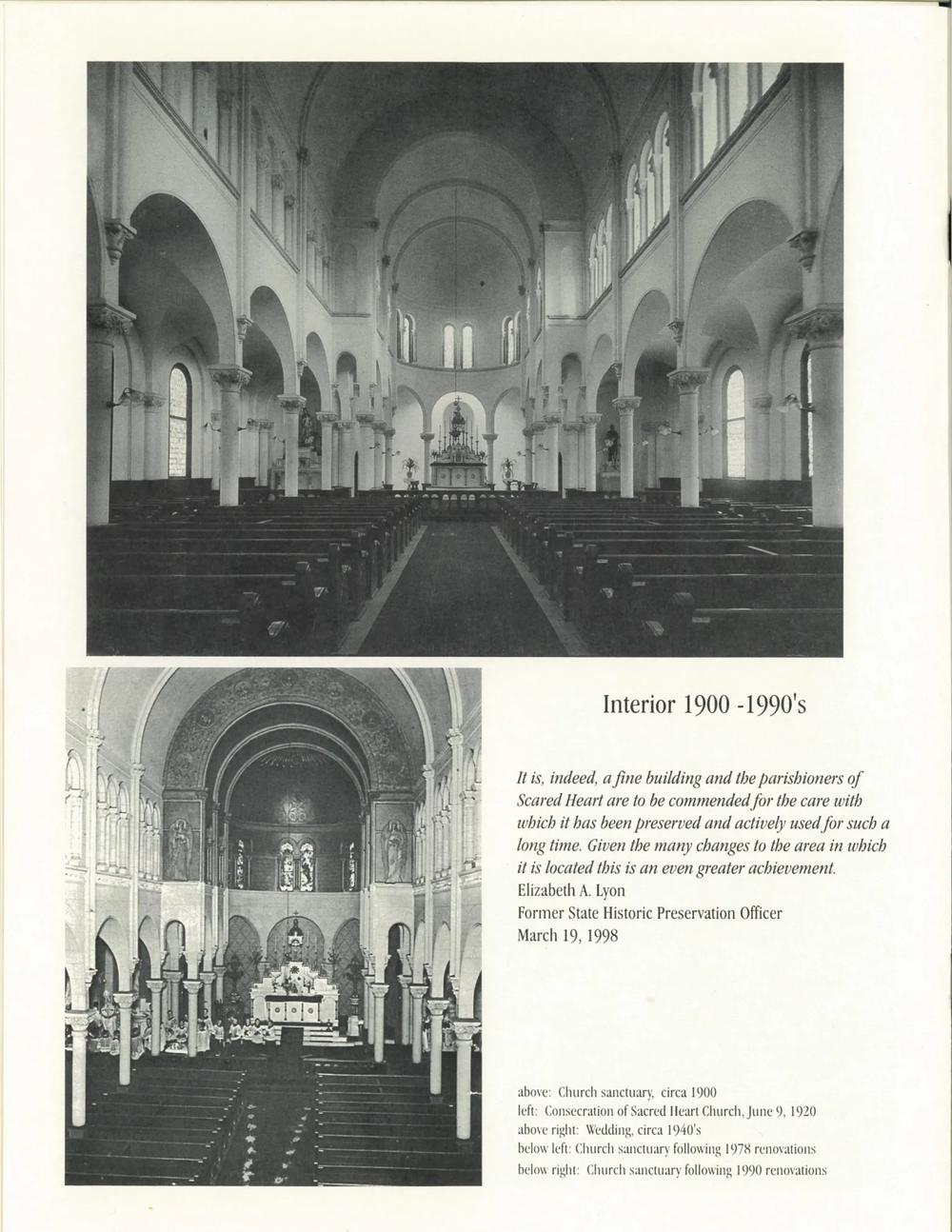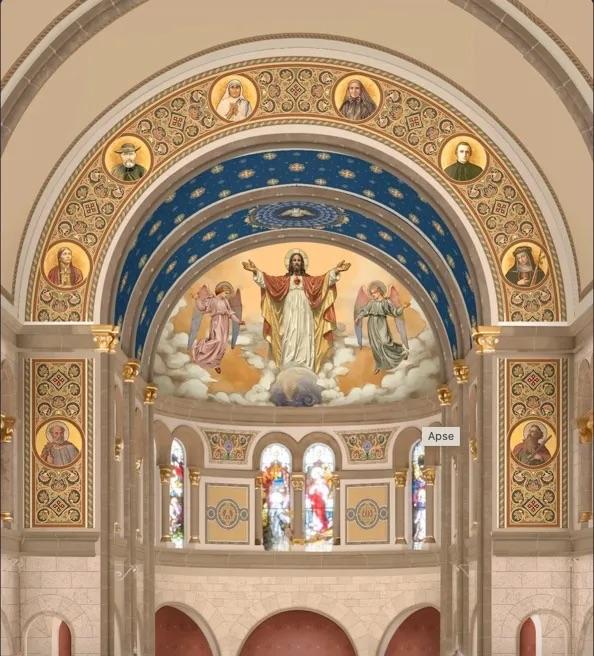
Caption
The Basilica of the Sacred of Jesus on Peachtree Street in Downtown Atlanta is known for its twin towers and red brick. Above the entryways is a flat facade with a large rose window that includes a design of the Sacred Heart.
Credit: Photo by Dyana Bagby






